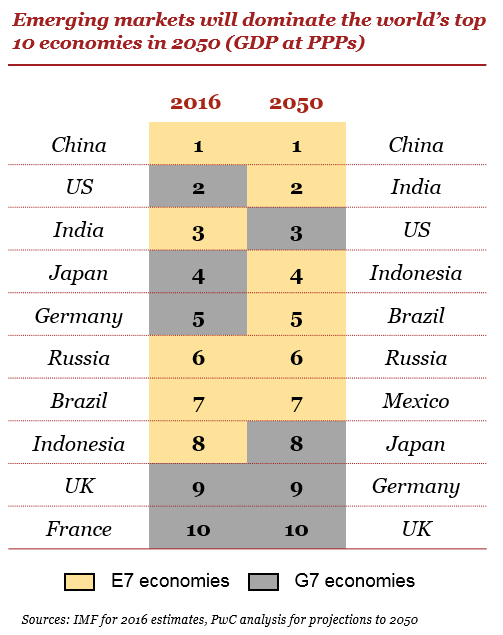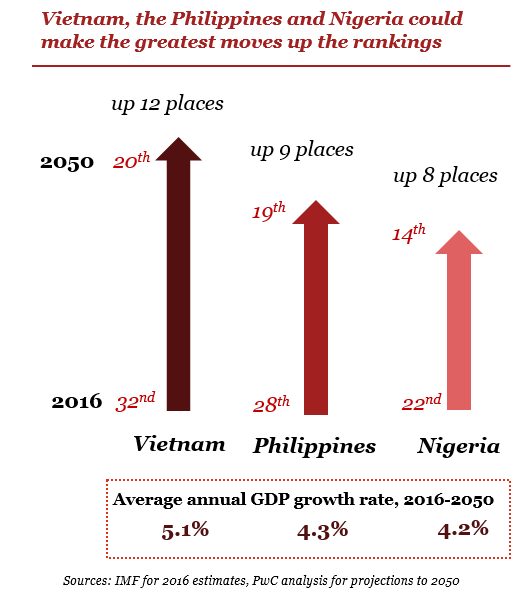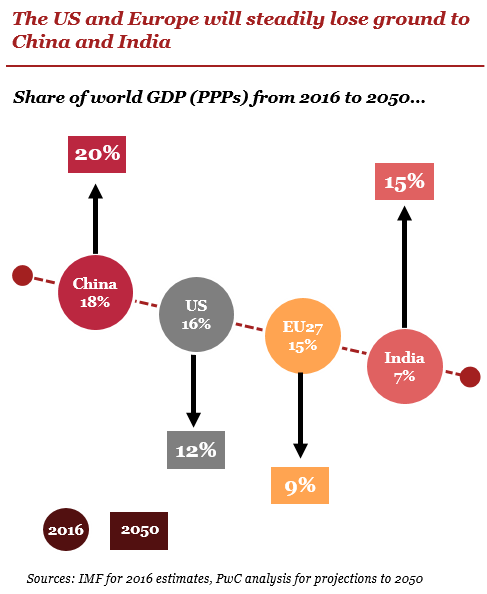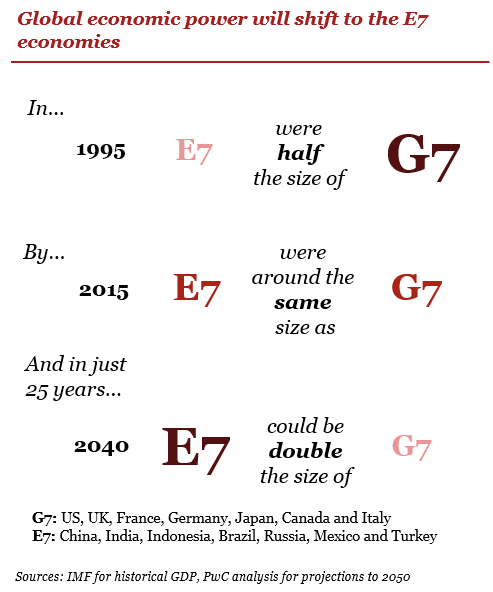The World in 2050
The long view: how will the global economic order change by 2050?
#world2050Key findings
This report sets out our latest long-term global growth projections to 2050 for 32 of the largest economies in the world, accounting for around 85% of world GDP.Key results of our analysis (as summarised also in the accompanying video) include:
- The world economy could more than double in size by 2050, far
outstripping population growth, due to continued technology-driven
productivity improvements
- Emerging markets (E7) could grow around twice as fast as advanced economies (G7) on average
- As a result, six of the seven largest economies in the world are
projected to be emerging economies in 2050 led by China (1st), India
(2nd) and Indonesia (4th)
- The US could be down to third place in the global GDP rankings while the EU27’s share of world GDP could fall below 10% by 2050
- UK could be down to 10th place by 2050, France out of the top 10
and Italy out of the top 20 as they are overtaken by faster growing
emerging economies like Mexico, Turkey and Vietnam respectively
- But emerging economies need to enhance their institutions and
their infrastructure significantly if they are to realise their
long-term growth potential.
Challenges for policymakers
Our analysis also identifies a number of key challenges for policy-makers, including:- Avoid a slide back into protectionism, which history suggests would be bad for global growth in the long run
- Ensuring that the potential benefits of globalisation are shared more equally across society
- Developing new green technologies to ensure that long-term global growth is environmentally sustainable
Opportunities for business – winning in emerging markets
Our report, which can be downloaded in full below, also considers the opportunities for business:- As emerging markets mature, they will become less attractive as
low cost manufacturing bases but more attractive as consumer and
business-to-business (B2B) markets
- But international companies need strategies that are flexible
enough to adapt to local customer preferences and rapidly evolving local
market dynamics
- Since emerging markets can be volatile, international investors also need to be patient enough to ride out the short-term economic and political cycles in these countries

























0 comments:
Post a Comment